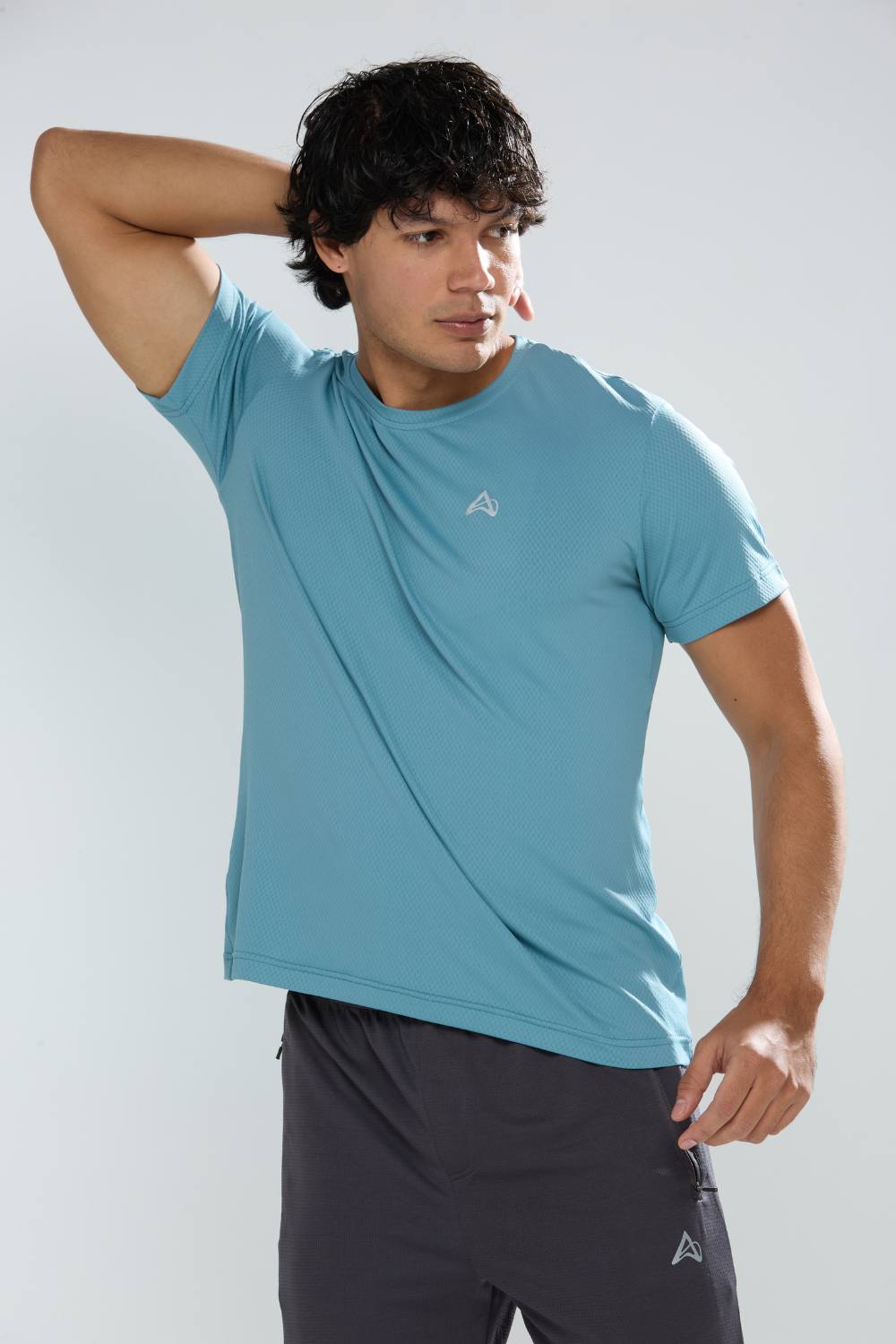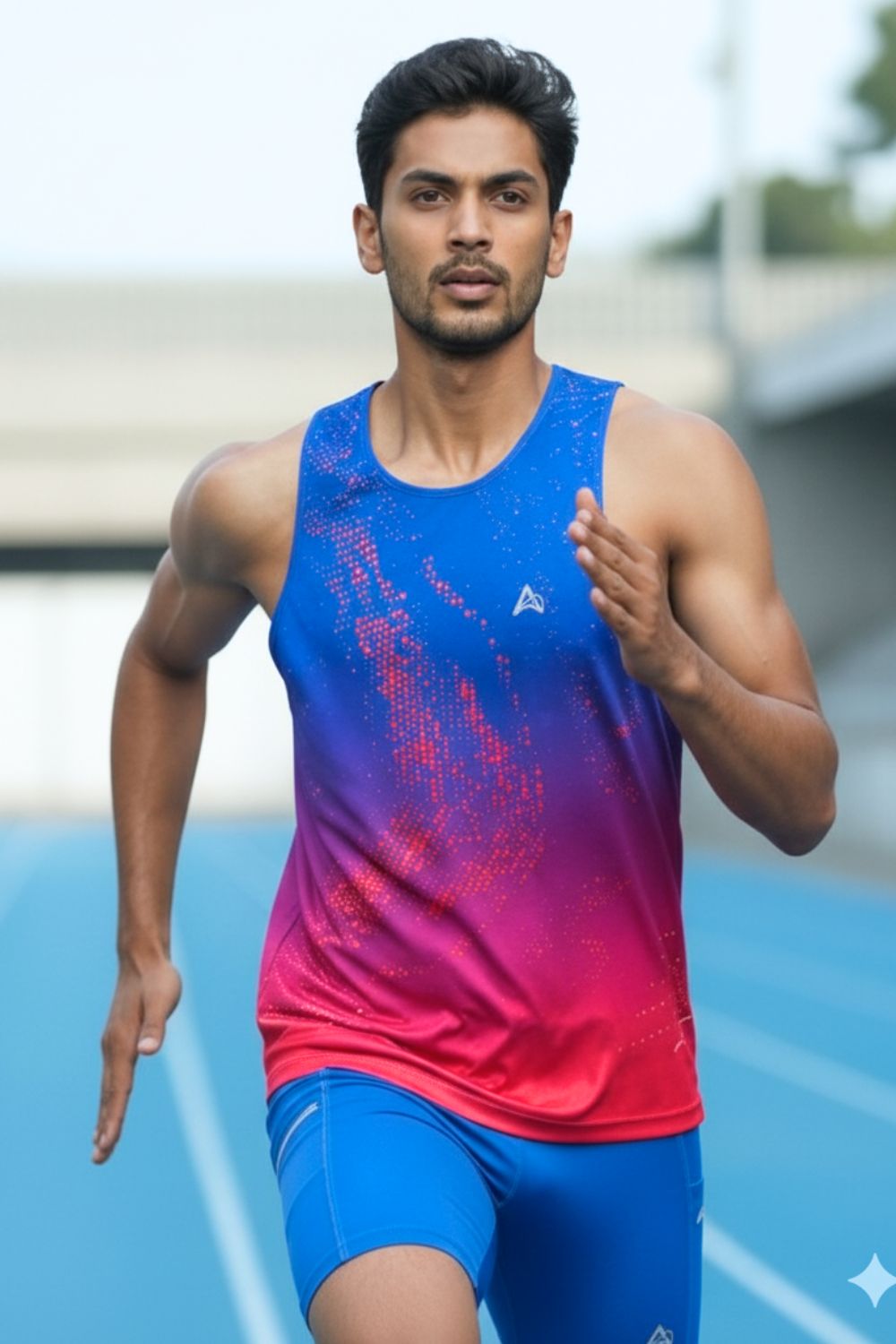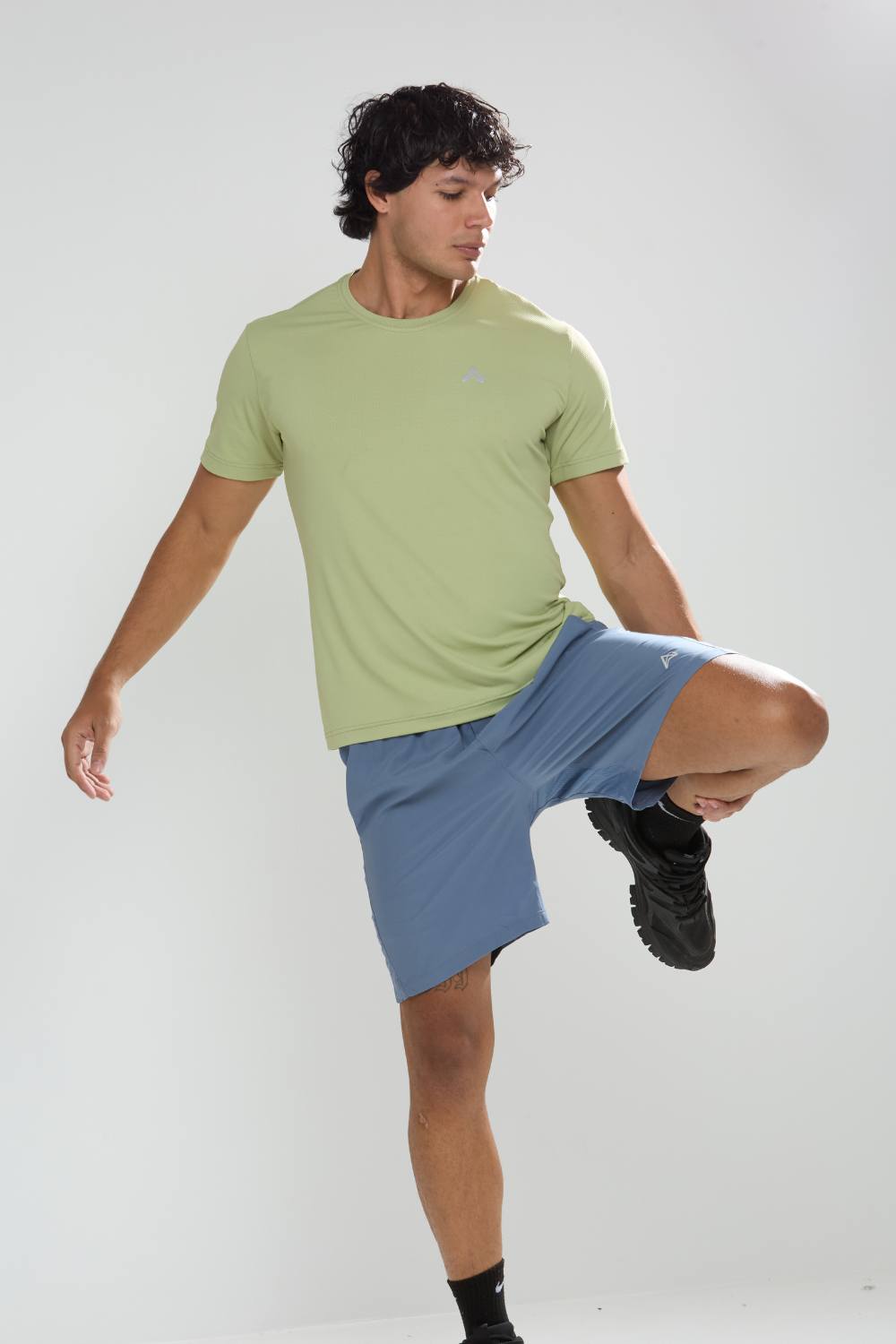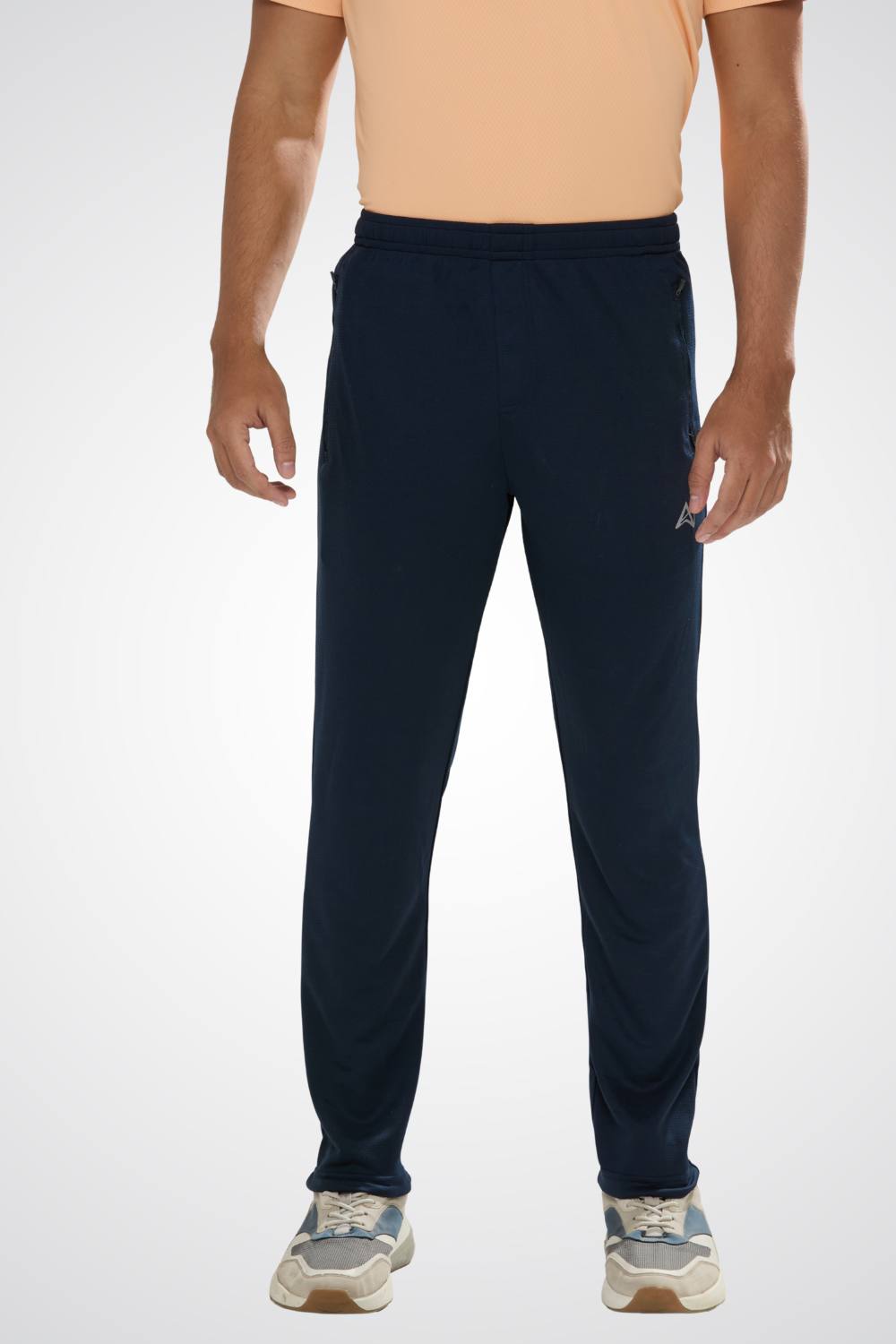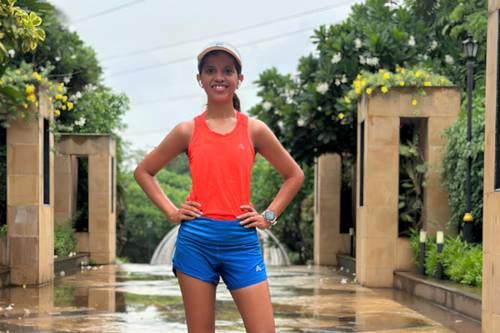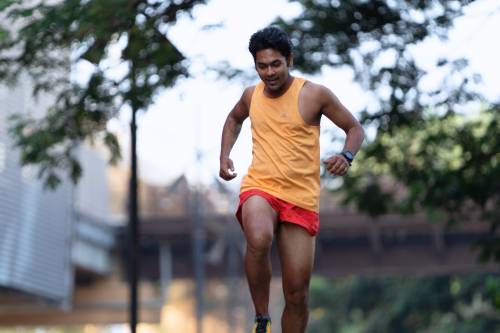Quick Listen:
In the predawn glow along Mumbai's iconic Marine Drive, a diverse crowd gathers young professionals in high-tech moisture-wicking shirts, elderly enthusiasts in simple tracksuits, women adjusting modest activewear, and a para-athlete fine-tuning a specialized prosthetic leg. Their footsteps echo against the sea breeze, symbolizing not just personal fitness goals but a broader cultural transformation. India's running scene is exploding, driven by inclusivity that welcomes all backgrounds, abilities, and aspirations. This shift is propelling the high-performance sports clothing sector forward, as brands adapt to meet the needs of an increasingly varied runner base in urban centers and beyond.
Tired of gear that slows you down? Chafing, soggy fabrics, and missing pockets kill your run's momentum. At Aguante, we're runners who get it. Our high-performance activewear features moisture-wicking fabrics, ergonomic designs, and smart storage to keep you focused. Shop Now!
Inclusivity Powers India's Running Surge
India's sports industry stands on the cusp of remarkable expansion. A joint Deloitte-Google report from late 2024 projects the market to balloon from $52 billion currently to $130 billion by 2030, achieving a 14% compound annual growth rate. Core areas such as sporting goods and apparel, valued at $25 billion in 2023, are set to climb to $58 billion. Allied fields like nutraceuticals and sports tourism are anticipated to reach $40.2 billion and $13 billion, respectively. This momentum stems from heightened government funding up 1.6 times in recent years from $260 million to $405 million coupled with digital proliferation, healthier living trends, and increasing household incomes.
Yet, the real catalyst is inclusivity, fostering environments where runners of every gender, age, physique, and capability can participate without barriers. Running has evolved from an elite pursuit to a mass movement. In cities like Delhi and smaller locales in Tamil Nadu, events organized by corporations, educational institutions, non-profits, and housing complexes draw massive crowds. A recent analysis highlights this "running revolution," with experts noting a definitive mindset shift toward health and wellness, resulting in packed events and enthusiastic participation across demographics.
This trend shows no signs of slowing. Government initiatives, including the newly approved National Sports Policy 2025, aim to elevate India as a global sporting powerhouse, emphasizing grassroots involvement and infrastructure. The fitness segment alone is poised for 15% CAGR, potentially hitting $4.5 billion by 2030, per Deloitte insights. With 655 million sports fans 43% Gen Z, 36% women, and 59% rural demand for inclusive activities like running is surging, extending beyond cricket to kabaddi, football, and esports.
Crafting Gear for Diverse Needs
At running events nationwide, diversity takes center stage. Women-led groups in Mumbai and Delhi emphasize secure, culturally sensitive spaces, where participants opt for extended-length, breathable garments suited to humid conditions. Adaptive communities are flourishing, with para-athletes advocating for equipment that integrates seamlessly with prosthetics or mobility aids. A 2023 study on enhancing accessibility underscores the challenges in India's Paralympic ecosystem, citing inadequate support for women para-athletes facing intersecting discriminations of gender, economic status, and disability.
Brands are responding decisively. Global and domestic players are introducing size-inclusive collections to accommodate varied body shapes, addressing the mismatch of standard international sizing with Indian physiques. Climate-responsive materials sweat-repelling for tropical heat or insulating for northern elevations like Himachal Pradesh are becoming standard. Local startups are innovating with budget-friendly, entry-level options that maintain durability, including gender-neutral lines positioned as emblems of equality. These adaptations build credibility among runners who previously felt marginalized, transforming apparel from mere clothing to tools of empowerment.
Recent developments amplify this focus. The upcoming New Delhi 2025 World Para Athletics Championships, hosting 73 Indian para-athletes from February 27 to March 8, marks a historic milestone as India's first major global para event. With 186 medal events 101 for men, 84 for women, and one mixed this championship highlights inclusivity, featuring adaptive attire like certified helmets and specialized boots. Partnerships with accessibility advocates, such as Svayam, ensure barrier-free venues, while celebrity endorsements from figures like Kangana Ranaut boost visibility. Such events are catalyzing demand for specialized sports apparel, aligning with broader calls for gender-inclusive facilities and stigma reduction.
Navigating Obstacles in the Path
Despite progress, hurdles persist. In smaller cities, high-end gear availability is spotty, forcing reliance on inconsistent local or e-commerce sources. Pricing remains a deterrent; imported premium wear can exceed monthly earnings for many. Societal norms in conservative areas often deter women from public exercise, while seniors may feel alienated in youth-dominated settings. Event setups frequently fall short, lacking essentials like accessible restrooms, shaded rest areas, or secure pathways, which alienates those with disabilities or vulnerabilities.
Tokenistic marketing adds another layer of frustration campaigns flaunting diversity without stocking inclusive sizes or features. A Bengaluru event coordinator remarked that true inclusivity demands substantive action for the overlooked. Women's safety emerges as a pressing concern amid the running boom; while ultras abroad pose fewer risks, Indian roads demand vigilance, as noted in recent discussions. Infrastructure deficits, like the infamous 2023 sign barring wheelchairs from a sports ground, exemplify ongoing barriers, per accessibility audits revealing few disabled-friendly structures.
Export figures reflect manufacturing resilience but also highlight gaps. In the first ten months of FY25, sports goods exports reached $497.3 million, with forecasts eyeing $660 million by FY26, per a CareEdge Ratings analysis. Hubs in Jalandhar and Meerut produce 75-80% of goods, exporting 60%, yet domestic inclusivity in design lags for para-sports.
Seizing Strides Toward Opportunity
The landscape brims with potential. Projections indicate a 10-12% CAGR for the sports market through 2030, contributing 0.9% to GDP and intertwining with media, education, and tourism for amplified economic impact. A 2025 industry report forecasts India's sports economy doubling from £38.84 billion to nearly £78 billion by 2027, underscoring rapid ascent. Run clubs are proliferating, fostering community and influencing activewear trends, with social media amplifying belonging and inclusivity.
For apparel firms, embracing diversity is essential. Lines tailored for sizes, climates, and abilities enhance loyalty and unlock revenues. Tech innovations virtual try-ons and AI customization empower personalized fits, while apps link runners nationwide, strengthening bonds that boost brand allegiance. The rise of endurance events like Ironman and HYROX signals growing inclusivity, with Mumbai Marathon data showing broader participation. Brands investing in social run groups and pacing tools, as per global running culture studies, reap cultural and commercial rewards.
Government and private synergies, like Khelo India and corporate social responsibility efforts, are pivotal. The sector could generate 10.5 million jobs and $21 billion in taxes by 2030, positioning India among top G20 sports nations. As urban running shapes fashion prioritizing functionality and style the industry must innovate sustainably to sustain this momentum.
Toward an Inclusive Horizon
India's running evolution transcends exercise; it's a societal pivot toward equity and vitality. From bustling marathon starts to serene village paths, individuals discover purpose in motion. For high-performance apparel, inclusivity is the linchpin to harnessing the $130 billion market. Leaders in adaptive, culturally attuned designs will dominate, while laggards falter. Echoing a Chennai runner's sentiment during a community 5K: feeling acknowledged propels you further. This ethos must guide the sector, ensuring every stride advances collective progress.
Frequently Asked Questions
How big is India's sports and running market expected to grow by 2030?
India's sports industry is projected to reach $130 billion by 2030, growing at a 14% compound annual growth rate from the current $52 billion. The sporting goods and apparel segment alone is expected to climb from $25 billion in 2023 to $58 billion by 2030, driven by government funding increases, digital proliferation, and the inclusive running revolution across urban and rural areas.
What makes India's running community more inclusive than traditional sports?
India's running scene welcomes participants of all genders, ages, abilities, and backgrounds, transforming from an elite pursuit to a mass movement. Events now feature diverse crowds including women in culturally sensitive activewear, para-athletes with specialized equipment, and runners from various economic backgrounds. This inclusivity is supported by adaptive gear, size-inclusive collections, and climate-responsive materials designed specifically for Indian conditions and body types.
What challenges do runners face in accessing inclusive sports gear in India?
Key barriers include limited availability of high-end gear in smaller cities, pricing that can exceed monthly earnings for many Indians, and tokenistic marketing that promotes diversity without actually stocking inclusive sizes. Additionally, societal norms in conservative areas deter women from public exercise, while infrastructure deficits like inaccessible venues and safety concerns on Indian roads create ongoing obstacles for diverse running communities.
Disclaimer: The above helpful resources content contains personal opinions and experiences. The information provided is for general knowledge and does not constitute professional advice.
You may also be interested in: How Indian Runners Build Endurance With Proper Gear
Tired of gear that slows you down? Chafing, soggy fabrics, and missing pockets kill your run's momentum. At Aguante, we're runners who get it. Our high-performance activewear features moisture-wicking fabrics, ergonomic designs, and smart storage to keep you focused. Shop Now!
Powered by flareAI.co





